Like many other industries, technical writing is constantly evolving.
For instance, the product used to be the star of the documentation.
Nowadays, technical documentation is written with the reader in mind, and that’s just one of many changes in the field.
While most of the emerging trends in technical writing heighten the quality of content, they could be a bit challenging to implement if you haven’t updated your writing practices in recent years.
So, let’s review what technical writing trends you can expect from 2022 onward.
More Available Tools for Technical Writing
A rising number of writing tools available online has created a new trend in technical writing.
Rather than relying on the old trusty Microsoft Word, writers now use an array of technical writing tools to plan, create, edit, and publish content.
So, why would you stick to one general piece of software when you can bring your writing to the next level with several specialized tools?
For instance, you could use Notion for planning and Miro for creating diagrams.
That approach would yield better results than using an inadequate, all-purpose tool for everything just because you’re used to it.
However, when it comes to writing and editing, most writers settle on a single solution to keep things organized.
Archbee, our product documentation platform, is the perfect solution for those looking for a powerful writing tool that also integrates well with external apps.
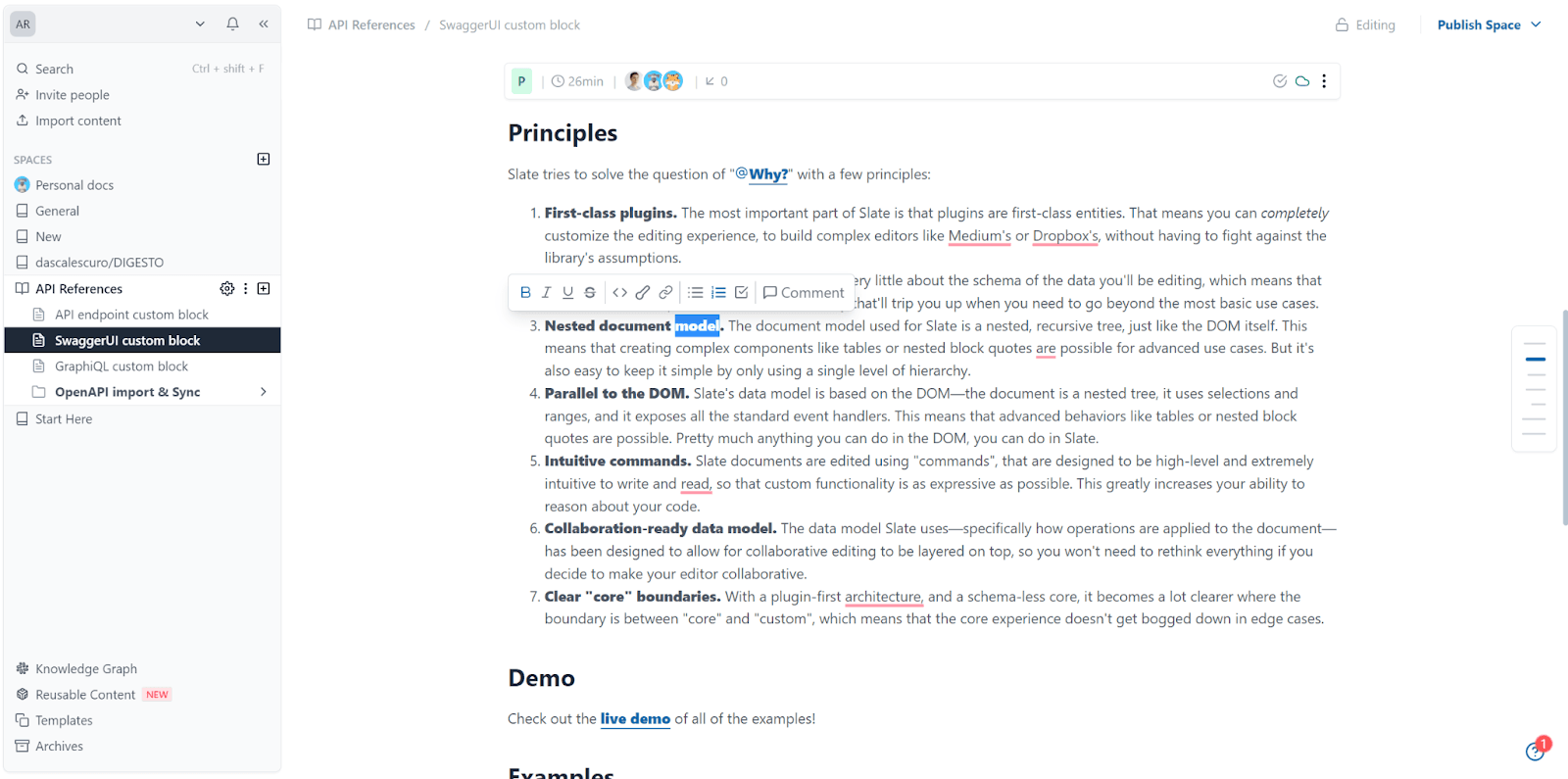
Source: Archbee
Archbee’s editor lets you write, edit, and organize your content on a single platform. But if you’re in tune with technical writing trends, you probably need more than that.
Luckily, Archbee has 25 embeds and integrations available, which means that you can still use different writing tools without shuffling between several open tabs and windows.
Let’s explore one possible scenario. Since clarity is one of the prerequisites for great technical writing, chances are that you’re using a writing assistant, such as Grammarly.
So, if you used Archbee, the integration with Grammarly would let you access the assistant immediately during writing, without having to copy and paste the text and potentially risk formatting errors.

Source: Archbee
This is a case where two tools work better than one. Now, imagine how much you could improve other areas of your technical writing if you explored tools made specifically for your industry.
Remember, the tools are here to assist you in creating better technical content.
Once you decide to step out of your comfort zone, you’ll be able to discover new tools that can help you improve different areas of your technical writing.
More Collaborative Documentation
With an increased awareness of what well-written technical documentation can do for a business, companies have started including more people in the creative process to ensure a polished end result.
The shift has kickstarted a new technical writing trend: collaboration in technical documentation.
Technical writing is not done in a vacuum.
Writers, subject matter experts, editors, and reviewers all play vital roles in the writing process, which has created a demand for collaboration in document production.
Emails and Slack messages are not the best way to achieve optimal teamwork, though. Instead, it would be better if your writing platform had a built-in mention system, as Archbee does.
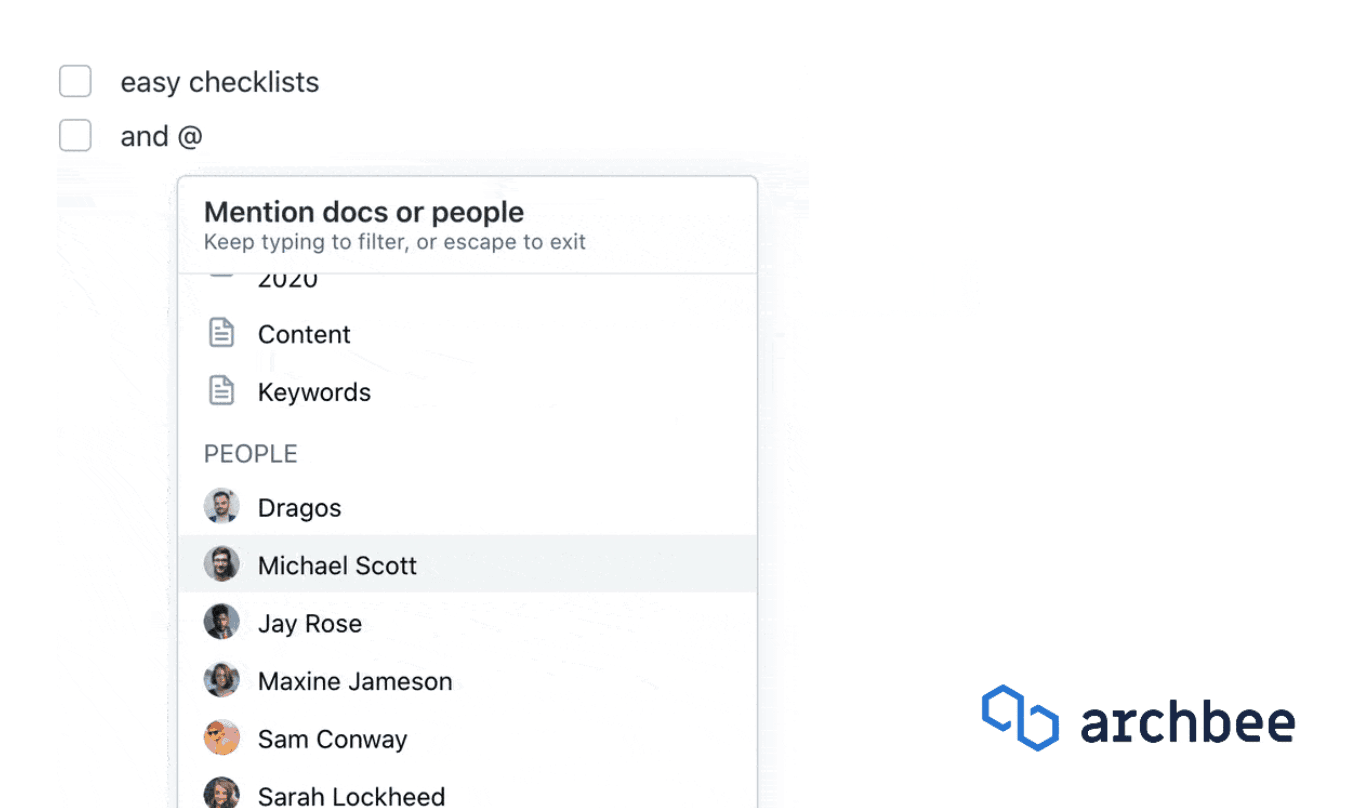
Source: Archbee
In Archbee, all contributors can highlight parts of the content and leave their comments.
To make sure the question or the suggestion reaches the right person, you can also tag people and reference relevant documents.
That way, you have an overview of all requests for changes, clarifications, and updates in one place.

Source: Archbee
The best thing about this technical writing trend is that you no longer have to wait for the writer to submit the first draft before moving on to the next stage of technical content production.
Tools for collaboration allow all parties to get involved from the start—a feature that’s especially useful if you’re trying to enforce consistency in terminology.
So, if you’re somebody who enjoys a team-oriented approach to technical writing, the collaboration trend will be right up your alley.
Relying on Shared Writing Practices
Before almost every software product came with technical documentation, technical writing was often uncharted territory.
However, the rise of technical content has contributed to more established writing practices and thus created the trend of standardization in the technical writing industry.
It’s worth noting that the standards we’re talking about come from the active community of tech writers, which means that they are constantly evolving and not set in stone.
So, whether you’re writing about an established industry or an innovative one such as machine learning, you can probably find online how others have presented information to their readers.
There’s even niche technical documentation available, like the docs for deep learning, as you can see in this excerpt from the documentation for PyTorch, a deep learning framework.

Source: PyTorch
In addition to using industry examples to direct your technical writing, you can also check out the rising number of technical writing resources.
You can choose between technical writing books, style guides, and blogs to look up how to best present a piece of content.
As you can see, you won’t find many rigorous or government-issued standards for technical writing.
Still, the prevalence of writing resources has made it easier for writers to see how other people handle technical subjects, and the trend of sharing writing practices has increased the availability of materials you can reference.

Source: GitHub
Although a set of hard-set rules may sound like it could streamline the writing process, you shouldn’t forget that writing practices change ever so often.
With that in mind, you should treat the frequently-updated resources as the writing standard.
Interactive Documentation
Clients want approachable information, and the best way you can provide it is by creating your documentation interactive, which is the next technical writing trend we’ll examine.
The critical component of interactivity is letting the users navigate the documentation at their own pace.
One way to do this is by incorporating the search bar into the documentation so that users can browse the information they need.
A clickable table of contents also helps readers access relevant sections only, without having to go through all the pages, like in the time of printed user instructions.
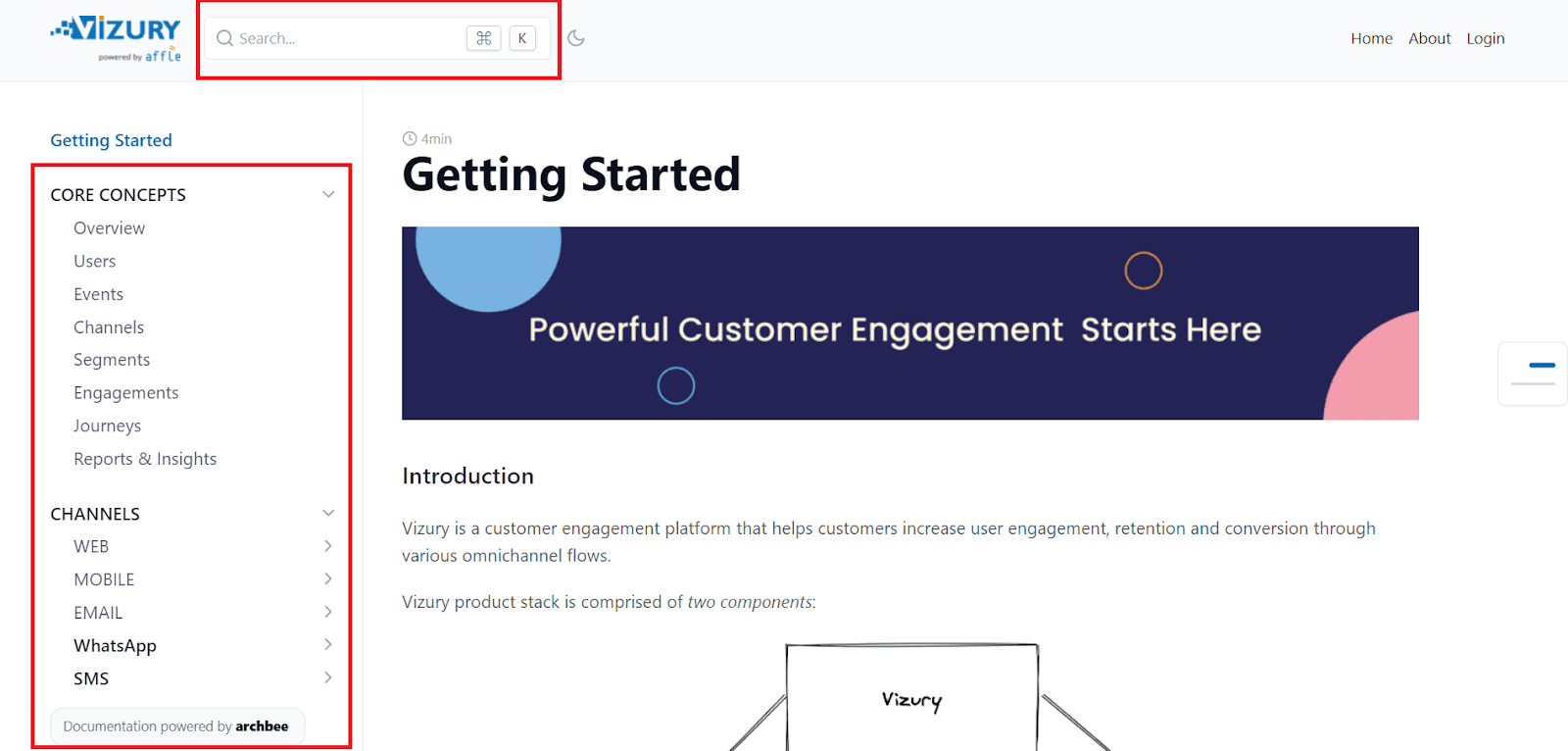
Source: Vizury
However, some companies go a step further and make the content itself interactive. You can see this emerging trend mainly in the documentation for physical products.
Software products are already interactive, and users can explore different features on their own.
But when you’re describing a physical product, you can’t expect a user to turn a half-a-tonne device around to examine its elements.
This is why interactive 3D models are becoming a standard feature in technical documentation. Here’s an example of one created with Internova.
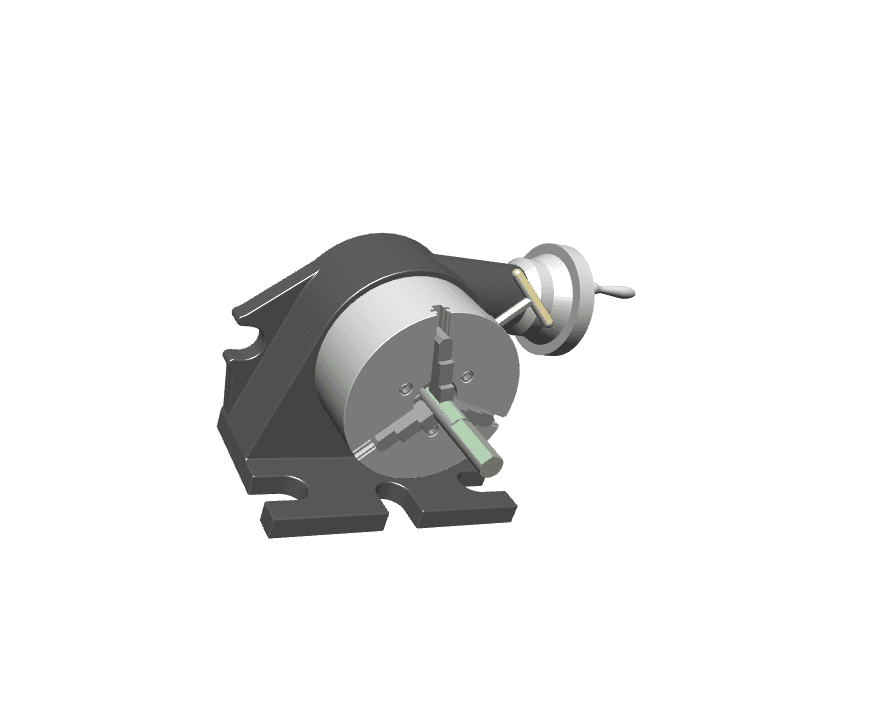
Source: Internova
3D models are the true embodiment of interactive documentation because they allow readers to inspect the product from all angles and zoom in to get a detailed view of components.
Some more elaborate ones even let you see inside the mechanism. In other words, readers are the ones who control how content is presented.
As a technical writer, working with interactive documentation probably won’t require you to learn CAD tools.
Still, you should be ready to prepare more descriptions of a specific product so that you can equip readers with explanations for each view they choose.
Interactive documentation may be a bit more demanding to develop, but seeing how it makes exploring the product easier, we can assume that the trend is here to stay.
Media-Rich Documentation
The age of dry textual documentation is coming to an end, much to the end-users’ delight.
If you’ve recently noticed more videos or GIFs in technical documentation, you’ve witnessed the new trend of media-rich technical writing.
Customers want information, and they don’t want to spend ages obtaining it.
This is why lengthy process descriptions in technical documentation were replaced with more approachable formats of conveying information, such as videos.
Let’s take the documentation of Datree, a CLI solution, as an example.
In the section about finding misconfigurations in Kubernetes manifest files, Datree introduces users to the subject with a short video.
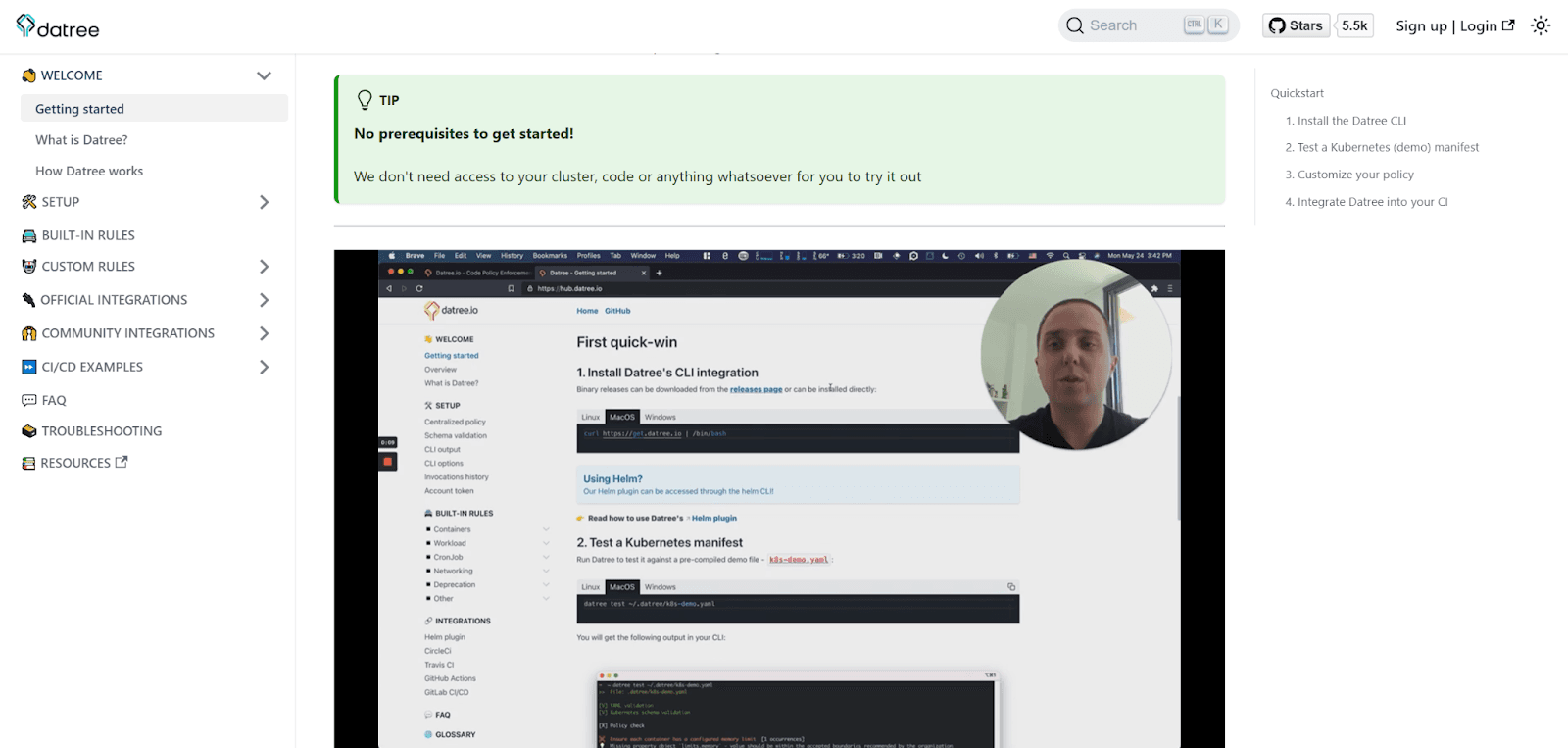
Source: Datree
The video is followed by concise instructions enriched with screenshots and GIFs.
The combination of the media allows users to see what the process looks like directly, rather than reading about it and possibly drawing incorrect conclusions.
Of course, the choice of the visual elements depends on what information you’re aiming to convey.
While videos and GIFs are better for describing processes, you’ll notice screenshots and images in many pieces of technical documentation.
Clearly annotated images help users navigate the software product that’s being described.

Source: Datree
Considering how fast the trend of media-rich technical documentation is spreading, tech writers should get ready for a change in the scope of work.
If you don’t want your customers to switch to a service provider with more approachable documentation, you should start incorporating media into your technical writing.
Stronger Focus on the Reader
If your writing efforts were only directed at describing the product, the new trend of focusing on the reader might make you reconsider your technical writing strategy.
While modern technical writing still revolves around describing a product or a service, the reader now plays a more significant role in how documentation is written, especially regarding the user experience (UX).
Since the reader is the party that determines the success of technical writing, you’ll notice that many pieces of technical documentation now come with feedback widgets.

Source: Segmind
These feedback requests provide the reader with an opportunity to voice their opinion of the content and shape future documentation.
Similarly, the UX of technical content has also changed to better accommodate the way readers navigate documentation. As they say, content is king—but only if it’s accessible.
Because of that, bulky user instructions are fading in popularity and being replaced with more approachable content formats.
This means organizing information in concise, approachable chunks and using an organized layout that allows readers to search for relevant sections.
Grammarly’s API documentation is a great example of the practice.
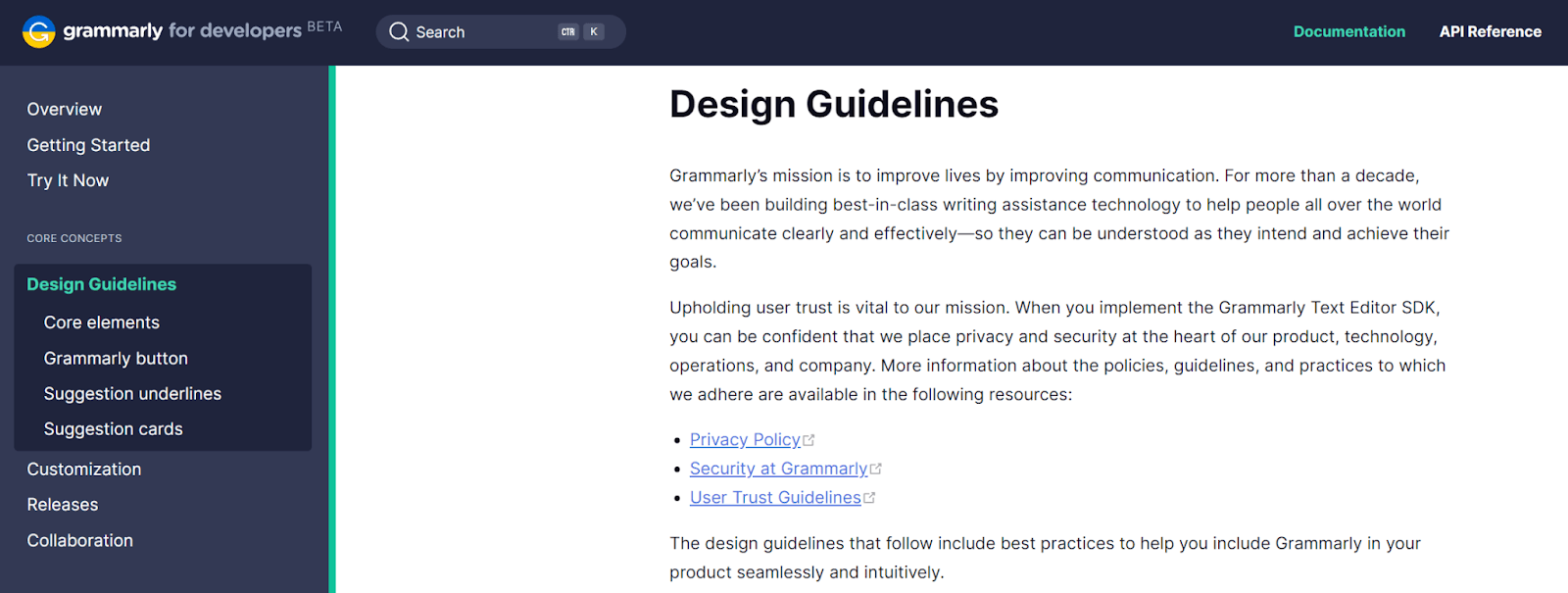
Source: Grammarly
So, once you start exploring the ways you can organize information so that readers can find it quickly, you’ll be able to increase their satisfaction with the product documentation and, ultimately, the product itself.
Don’t forget that you don’t have to guess whether the readers like the new design of your documentation; by embedding feedback forms directly into the documentation, you can get user opinions right at the source.
Conclusion
Some of the trends we’ve seen change the game for technical writers, while others also affect the results the readers receive.
Either way, technical writing is undergoing numerous changes, and we believe that these six are here to stay.
So, if you want to provide your users with a better reading experience, you should start applying the principles of the latest technical writing trends.
Frequently Asked Questions
A major shift is from product-first to reader-first documentation. Modern docs are structured around user tasks and outcomes, use clear, accessible language, and are easy to navigate. Teams embed quick feedback widgets and analyze usage to spot gaps, then iterate. You’ll also see practices like concise, scannable sections, better information architecture, and inclusive, accessible writing so readers can find and use answers faster.



